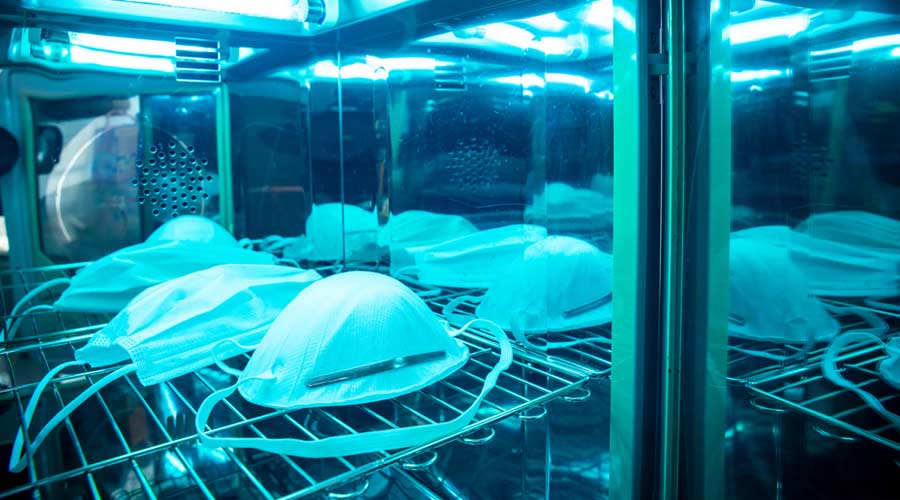The healthcare industry has made rapid advancements over the last two years because of the COVID-19 pandemic. Quick implementation of new technologies traditionally can make people nervous, but these advancements went hand in hand with research on how the coronavirus spreads.
Over the last decade, UV-C lighting technology has become more efficient, cost-effective and broadly accepted. Software can be used for predictive modeling and efficacy to determine the specific UV-C dose/fluence required to inactivate specific RNA and DNA viruses, which has been crucial to understanding the coronavirus.
“The earliest UV-C light air disinfection systems were upper-room fixtures wall-mounted near the ceiling,” says Jim McMahon, vice president sales Americas with Heraeus Noblelight America. “These were used in tuberculosis patient wards, for example. Today, in-room systems better circulate and disinfect the air while ensuring occupant safety. UV-C light air disinfection works against all current and future variants of COVID-19. It’s another layer of protection recommended by the CDC and ASHRAE in addition to the usual infection-control measures, such as mask wearing. So, healthcare facilities can provide healthier environments for patients and help prevent staffing shortages, as well be more resilient during this and future pandemics.”
It is well known that UV-C light can rapidly kill microbes, but conventional germicidal UV-C light cannot be used directly to destroy airborne viruses in occupied indoor spaces because it harmful to occupants. But a study by the University of St. Andrews, University of Dundee, University of Leeds and Columbia University found that far-UV-C light could be just as effective in eliminating bacteria and viruses without safety concerns.
UV-C lighting can improve patient care within hospitals and other healthcare facilities because staff can regularly disinfect high-touch areas, such as beds, furniture and equipment. It can also help maintain and improve indoor air quality.
“UV-C light can help fight against infectious aerosols in patient rooms and other areas to decrease the germ load, reducing the likelihood of hospital acquired infections and the spread of viruses amongst patients, staff and visitors,” McMahon says. “When choosing UV-C light devices for air disinfection, it’s important to consider safety, UV intensity and ease of installation into the built environment. In-room devices, wall-mounted or portable, have an internal fan for circulating air through the UVC lamps inside, which helps ensure disinfected air circulates through the room and that UV light is safely contained. Both in-room and in-duct UV-C lamps need to produce enough intensity for the volume of air and the velocity of air for in-duct systems. Work with a manufacturer who can properly size their system for your specific needs.”
Lighting technology has made dramatic strides over the last few years. Several different UV light disinfection technology approaches and commercially available solutions can treat both air and surfaces. Meanwhile, UV-C systems are also a proven, cost-effective solution that is readily available and can meet real-world budgets.
“The healthcare industry should incorporate UV-C light air disinfection technology to improve indoor air quality that results in better patient care and resiliency for future pandemics and viruses,” McMahon says.

 Contaminants Under Foot: A Closer Look at Patient Room Floors
Contaminants Under Foot: A Closer Look at Patient Room Floors Power Outages Largely Driven by Extreme Weather Events
Power Outages Largely Driven by Extreme Weather Events Nemours Children's Health Opens New Moseley Foundation Institute Hospital
Nemours Children's Health Opens New Moseley Foundation Institute Hospital Code Compliance Isn't Enough for Healthcare Resilience
Code Compliance Isn't Enough for Healthcare Resilience Ribbon Cutting Marks First Phase Completion for New Montefiore Einstein Facility
Ribbon Cutting Marks First Phase Completion for New Montefiore Einstein Facility